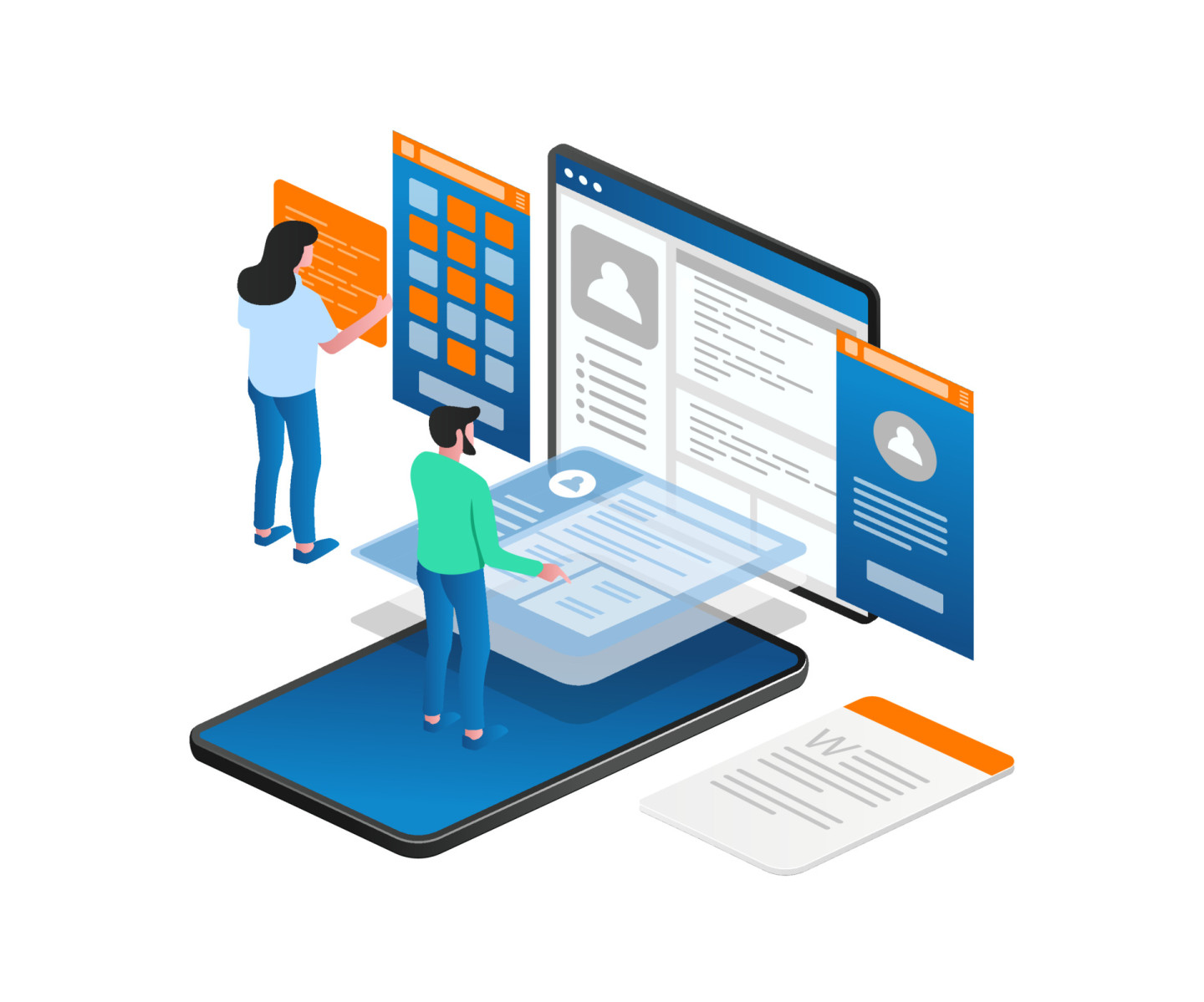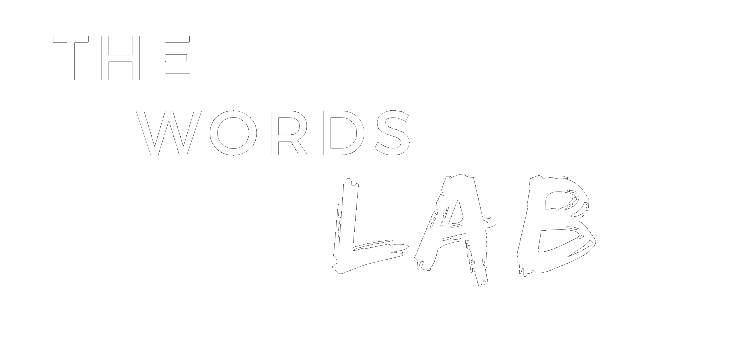CRO:
How to Improve User Experience
How to Improve User Experience
CRO:

CRO:
CRO:

Advertising Translation:
Advertising Translation:

Which is the Best E-Learning Software
Which is the Best E-Learning Software

How
How

Launching a website that resonates with a global audience involves more than just translating text. It requires a well-thought-out localization strategy that aligns with your business goals and adapts to the cultural and linguistic nuances of your target markets. By considering key factors, you can craft a robust localization plan that will enhance your global reach, improve user engagement, and drive higher conversion rates. Moreover, a well-localized website can boost customer satisfaction, build brand loyalty, and give you a competitive edge in diverse markets. This guide outlines 13 essential steps to ensure your website is ready for international success.
Starting with a well-defined localization strategy will provide you with a clear purpose, a concrete plan for expansion, and a significant business advantage. Key considerations for your website localization strategy include:
Establishing your company’s localization goals: Envision what expansion would look like for your company.
Product or Service: Determine if your offering can be easily adapted to another culture or market, or if it requires significant modifications, such as colours or logo.
Target Markets: Identify the languages, cultures, and demographics that align well with your product.
Pricing: Assess whether your pricing model needs adjustment for different regions.
Timeline: Establish a realistic timeline for when you aim to expand and become operational in new markets.
Budget: Decide how much you can allocate for translation, layout changes, and other necessary adjustments. Consider if you can handle the localization project internally or need to outsource.
Team: Address gaps and provide training to develop your team's ability to create high-quality localized content. Ensure they have deep knowledge of target languages and cultures, as nuances can vary. This preparation equips your team to handle localization complexities and support global expansion effectively.
Technology: Choose localization tools that align with your business goals, resources, and timeline. TMS like SDL Trados, memoQ, and Smartcat centralize tasks and enhance collaboration, while CAT tools like SDL Trados Studio, OmegaT, and Déjà Vu ensure consistency and efficiency by storing translations.
This guide covers the crucial steps for building a global website, starting with market research and prioritizing key regions, to understanding local audiences and using the latest localization technologies. By applying these strategies, businesses can create websites that appeal to users worldwide, offering a user experience that is both seamless and culturally relevant, ultimately boosting engagement and conversions.
Market research is crucial for developing a global website that attracts new customers and generates leads worldwide. To succeed in localization, it's important to understand your target markets well. Rather than trying to localize in over 1,000 languages right away, focus on countries where your main customers are. Identify these markets and predict where your product will do best.
Start with these key areas and stay open to new market opportunities in the future. Analyze countries carefully to get the most out of your localization efforts. Even big companies like Starbucks face challenges—like closing stores in places where there isn’t enough demand or they can’t meet regulations.
After selecting the markets you want to focus on, the next step is to dive into detailed research to understand exactly what customers in each region are looking for. It's important to avoid relying on general data that covers entire continents because preferences vary widely. For example, the preferences of the French are different from those of the French speaking part of Switzerland, and both are different from Swiss Germans in terms of culture and language.
To identify your international customer profiles, conduct specific research in each region you're targeting. Pay close attention to the demand for your product or service. If you find success in one area, prioritize expanding there first. Additionally, it's essential to collaborate with local linguists who understand the nuances and culture of each region.
When analyzing each market, start with fundamental questions that provide essential insights:
What is the market’s growth rate?
How competitive is the market?
Can local consumers afford your products?
What are their purchasing preferences?
Is there a demand for your product in this market?
How much will transportation and customer support cost you?
How does the cost of website localization compare to the market potential?
It's important to expand your customer base effectively without overspending. However, it's crucial to consider all marketing and financial factors when deciding which markets to target. Take Indonesia, for example—while it has a growing online population, cultural considerations, and local regulations may affect your product's marketability and sales potential there.
Budget allocation is obviously a crucial consideration to take into account, especially when it comes to localization efforts. It involves strategically distributing financial resources to ensure optimal outcomes in terms of language adaptation and cultural relevance. For example, investing in professional translation services, cultural consultancy, and localized marketing campaigns can significantly enhance the effectiveness of your global expansion strategy.
Assessing the effectiveness of your localization efforts is crucial for app success. Key Performance Indicators (KPIs) provide clear ways to measure how well your strategies are working. For example:
Downloads by region: Measure if app downloads increase in specific regions after localization.
User engagement: Track metrics such as session duration (how long users stay on the app per session), number of active users, and retention rates (how many users come back) to gauge improved engagement.
Conversion rates: Evaluate how localization impacts conversion metrics such as in-app purchases, subscription sign-ups, or clicks on call-to-action buttons.
App store rankings: Monitor changes in app store rankings in localized markets to assess visibility and discoverability improvements.
Customer feedback: Gather feedback from users in localized markets to understand satisfaction levels and identify areas for improvement.
Include costs related to app store optimization and localization efforts as part of your performance metrics to gauge return on investment and overall effectiveness.
Keyword research is crucial once you've chosen your target markets. It's important to explore this research for your localized website to understand the specific terms used by your target audience when searching for products or services similar to yours. This insight is key to adapting your content effectively for each market, considering how these terms may differ from those used in your home market.
When conducting keyword research, avoid simply translating your home market keywords. It's important to understand how people in the target market actually talk about your products or services. Just like some regions say "soccer" while others say "football" different areas have their own unique terms. Even the best content can struggle if your target audience can't easily find it.
This is where multilingual keyword research becomes essential. You can have marketers fluent in your target language conduct this research, or use a team of SEO experts who specialize in translation. With the right combination of market knowledge, tools, and language skills, they can identify the best local terms to attract more visitors and generate more leads.
Localization technology can save you time and money on website localization, just like other tech tools make business tasks easier. Having the right tools for localization is essential. Here are the main types of software that can help streamline your website localization process:
Machine Translation (MT) can automatically translate content, which can then be edited by a human translator for quality. MT is always improving, with newer versions better at understanding grammar, context, and natural language.
Translation Management Systems (TMS) keep all your translations in one place, making them easy for any team member to access. By connecting with systems like your content management system (CMS) or customer relationship management (CRM), a TMS can automate many localization tasks.
Computer-Assisted Translation (CAT) Tools help linguists work faster by storing and reusing past translations. This saves time and keeps your brand messaging consistent across all your content. Many TMS include CAT tools, or you can use standalone options.
Terminology Management Tools store all your approved brand terms and glossaries, ensuring everyone on your localization project uses the same words. This keeps your brand messaging consistent across all your content.
Linguistic Quality Assurance (QA) Tools check your translated content for errors before it goes live. They can automatically find issues like missing translations, wrong numbers, and awkward text flow. QA tools are often built into TMS solutions, but standalone products are also available.
Using these technologies, you can streamline your localization process, work more efficiently, and ensure high-quality translations that connect with your global audience.
Internationalization prepares your website for localization, ensuring your code allows easy translation without technical issues. One key step is decoupling translatable content from the source code, storing language-specific information separately. Best practices include:
The goal is to deploy your website in any market without rebuilding it, much like designing a vehicle to perform effectively on various terrains.
Great UX is crucial for your product’s success, impacting customer satisfaction, conversion rates, and sales. When localizing your website, consider how these efforts affect UX. For instance, even with internationalization ensuring space for longer text, you may need to adapt the UI design for different markets.
You might need to:
In essence, localizing your UX and UI means ensuring your website is user-friendly, engaging, and tailored to the specific preferences and needs of each target market.
Want to learn more about app localization? Check out our guide: What is app localization and why is it important?
Once your website is localized, rigorous testing is essential to ensure everything functions correctly and meets quality standards. For functional testing, focus on:
For linguistic testing, check:
In addition to functional and linguistic testing, incorporate A/B testing to compare different versions of localized content. This helps determine which version performs better in terms of user engagement and conversion rates. Make sure to involve a native speaker with strong localization expertise throughout the process. Develop a detailed test plan, gather relevant materials, set up your testing environment, and execute the tests to ensure your site is ready for a successful launch.
Once your localized website is live, you must effectively market it to your target audience. This involves understanding how purchasing habits, consumer behavior, and cultural norms vary across different markets.
Promotional materials that are tailored to your home market won’t resonate abroad. Your social media content must reflect local culture, and calls to action need to be clear and relevant.
To succeed, consider:
Localizing your marketing efforts—through tailored copy, local reviews, community engagement, and influencer partnerships—is key. By understanding market differences and applying these strategies, you’ll set yourself up for global success.
Investing in website localization is like having a VIP pass to new markets. Not only does it boost your chances of landing organic traffic from local searches, but it also gives your user experience a major upgrade. When your site speaks your visitors' language—literally—they’re more likely to stick around and become loyal customers.
Sure, website localization (multilingual desktop publishing DTP in our jargon) can feel like trying to juggle flaming torches. You’ve got to pinpoint your target audience, assemble a crack team, dive into native keyword research, and much more. It’s a lot for an in-house team to handle alone.
Looking for a hand with your localization project? At The Words Lab, we’re here to help you conquer new markets and unlock fresh revenue streams. Curious to see how we can help? Get in touch today.
Launching a website that resonates with a global audience involves more than just translating text. It requires a well-thought-out localization strategy that aligns with your business goals and adapts to the cultural and linguistic nuances of your target markets. By considering key factors, you can craft a robust localization plan that will enhance your global reach, improve user engagement, and drive higher conversion rates. Moreover, a well-localized website can boost customer satisfaction, build brand loyalty, and give you a competitive edge in diverse markets. This guide outlines 13 essential steps to ensure your website is ready for international success.
Starting with a well-defined localization strategy will provide you with a clear purpose, a concrete plan for expansion, and a significant business advantage. Key considerations for your website localization strategy include:
Establishing your company’s localization goals: Envision what expansion would look like for your company.
Product or Service: Determine if your offering can be easily adapted to another culture or market, or if it requires significant modifications, such as colours or logo.
Target Markets: Identify the languages, cultures, and demographics that align well with your product.
Pricing: Assess whether your pricing model needs adjustment for different regions.
Timeline: Establish a realistic timeline for when you aim to expand and become operational in new markets.
Budget: Decide how much you can allocate for translation, layout changes, and other necessary adjustments. Consider if you can handle the localization project internally or need to outsource.
Team: Address gaps and provide training to develop your team's ability to create high-quality localized content. Ensure they have deep knowledge of target languages and cultures, as nuances can vary. This preparation equips your team to handle localization complexities and support global expansion effectively.
Technology: Choose localization tools that align with your business goals, resources, and timeline. TMS like SDL Trados, memoQ, and Smartcat centralize tasks and enhance collaboration, while CAT tools like SDL Trados Studio, OmegaT, and Déjà Vu ensure consistency and efficiency by storing translations.
This guide covers the crucial steps for building a global website, starting with market research and prioritizing key regions, to understanding local audiences and using the latest localization technologies. By applying these strategies, businesses can create websites that appeal to users worldwide, offering a user experience that is both seamless and culturally relevant, ultimately boosting engagement and conversions.
Market research is crucial for developing a global website that attracts new customers and generates leads worldwide. To succeed in localization, it's important to understand your target markets well. Rather than trying to localize in over 1,000 languages right away, focus on countries where your main customers are. Identify these markets and predict where your product will do best.
Start with these key areas and stay open to new market opportunities in the future. Analyze countries carefully to get the most out of your localization efforts. Even big companies like Starbucks face challenges—like closing stores in places where there isn’t enough demand or they can’t meet regulations.
After selecting the markets you want to focus on, the next step is to dive into detailed research to understand exactly what customers in each region are looking for. It's important to avoid relying on general data that covers entire continents because preferences vary widely. For example, the preferences of the French are different from those of the French speaking part of Switzerland, and both are different from Swiss Germans in terms of culture and language.
To identify your international customer profiles, conduct specific research in each region you're targeting. Pay close attention to the demand for your product or service. If you find success in one area, prioritize expanding there first. Additionally, it's essential to collaborate with local linguists who understand the nuances and culture of each region.
When analyzing each market, start with fundamental questions that provide essential insights:
What is the market’s growth rate?
How competitive is the market?
Can local consumers afford your products?
What are their purchasing preferences?
Is there a demand for your product in this market?
How much will transportation and customer support cost you?
How does the cost of website localization compare to the market potential?
It's important to expand your customer base effectively without overspending. However, it's crucial to consider all marketing and financial factors when deciding which markets to target. Take Indonesia, for example—while it has a growing online population, cultural considerations, and local regulations may affect your product's marketability and sales potential there.
Budget allocation is obviously a crucial consideration to take into account, especially when it comes to localization efforts. It involves strategically distributing financial resources to ensure optimal outcomes in terms of language adaptation and cultural relevance. For example, investing in professional translation services, cultural consultancy, and localized marketing campaigns can significantly enhance the effectiveness of your global expansion strategy.
Assessing the effectiveness of your localization efforts is crucial for app success. Key Performance Indicators (KPIs) provide clear ways to measure how well your strategies are working. For example:
Downloads by region: Measure if app downloads increase in specific regions after localization.
User engagement: Track metrics such as session duration (how long users stay on the app per session), number of active users, and retention rates (how many users come back) to gauge improved engagement.
Conversion rates: Evaluate how localization impacts conversion metrics such as in-app purchases, subscription sign-ups, or clicks on call-to-action buttons.
App store rankings: Monitor changes in app store rankings in localized markets to assess visibility and discoverability improvements.
Customer feedback: Gather feedback from users in localized markets to understand satisfaction levels and identify areas for improvement.
Include costs related to app store optimization and localization efforts as part of your performance metrics to gauge return on investment and overall effectiveness.
Keyword research is crucial once you've chosen your target markets. It's important to explore this research for your localized website to understand the specific terms used by your target audience when searching for products or services similar to yours. This insight is key to adapting your content effectively for each market, considering how these terms may differ from those used in your home market.
When conducting keyword research, avoid simply translating your home market keywords. It's important to understand how people in the target market actually talk about your products or services. Just like some regions say "soccer" while others say "football" different areas have their own unique terms. Even the best content can struggle if your target audience can't easily find it.
This is where multilingual keyword research becomes essential. You can have marketers fluent in your target language conduct this research, or use a team of SEO experts who specialize in translation. With the right combination of market knowledge, tools, and language skills, they can identify the best local terms to attract more visitors and generate more leads.
Localization technology can save you time and money on website localization, just like other tech tools make business tasks easier. Having the right tools for localization is essential. Here are the main types of software that can help streamline your website localization process:
Machine Translation (MT) can automatically translate content, which can then be edited by a human translator for quality. MT is always improving, with newer versions better at understanding grammar, context, and natural language.
Translation Management Systems (TMS) keep all your translations in one place, making them easy for any team member to access. By connecting with systems like your content management system (CMS) or customer relationship management (CRM), a TMS can automate many localization tasks.
Computer-Assisted Translation (CAT) Tools help linguists work faster by storing and reusing past translations. This saves time and keeps your brand messaging consistent across all your content. Many TMS include CAT tools, or you can use standalone options.
Terminology Management Tools store all your approved brand terms and glossaries, ensuring everyone on your localization project uses the same words. This keeps your brand messaging consistent across all your content.
Linguistic Quality Assurance (QA) Tools check your translated content for errors before it goes live. They can automatically find issues like missing translations, wrong numbers, and awkward text flow. QA tools are often built into TMS solutions, but standalone products are also available.
Using these technologies, you can streamline your localization process, work more efficiently, and ensure high-quality translations that connect with your global audience.
Internationalization prepares your website for localization, ensuring your code allows easy translation without technical issues. One key step is decoupling translatable content from the source code, storing language-specific information separately. Best practices include:
The goal is to deploy your website in any market without rebuilding it, much like designing a vehicle to perform effectively on various terrains.
Great UX is crucial for your product’s success, impacting customer satisfaction, conversion rates, and sales. When localizing your website, consider how these efforts affect UX. For instance, even with internationalization ensuring space for longer text, you may need to adapt the UI design for different markets.
You might need to:
In essence, localizing your UX and UI means ensuring your website is user-friendly, engaging, and tailored to the specific preferences and needs of each target market.
Want to learn more about app localization? Check out our guide: What is app localization and why is it important?
Once your website is localized, rigorous testing is essential to ensure everything functions correctly and meets quality standards. For functional testing, focus on:
For linguistic testing, check:
In addition to functional and linguistic testing, incorporate A/B testing to compare different versions of localized content. This helps determine which version performs better in terms of user engagement and conversion rates. Make sure to involve a native speaker with strong localization expertise throughout the process. Develop a detailed test plan, gather relevant materials, set up your testing environment, and execute the tests to ensure your site is ready for a successful launch.
Once your localized website is live, you must effectively market it to your target audience. This involves understanding how purchasing habits, consumer behavior, and cultural norms vary across different markets.
Promotional materials that are tailored to your home market won’t resonate abroad. Your social media content must reflect local culture, and calls to action need to be clear and relevant.
To succeed, consider:
Localizing your marketing efforts—through tailored copy, local reviews, community engagement, and influencer partnerships—is key. By understanding market differences and applying these strategies, you’ll set yourself up for global success.
Investing in website localization is like having a VIP pass to new markets. Not only does it boost your chances of landing organic traffic from local searches, but it also gives your user experience a major upgrade. When your site speaks your visitors' language—literally—they’re more likely to stick around and become loyal customers.
Sure, website localization (multilingual desktop publishing DTP in our jargon) can feel like trying to juggle flaming torches.
Looking for a hand with your localization project? At The Words Lab, we’re here to help you conquer new markets and unlock fresh revenue streams. Curious to see how we can help? Get in touch today.

How to


What markets will you localize your app for?
Will you launch in-region first or go global from the start?
What’s your app localization timeline or roadmap?
What’s your localization budget?
What language service providers will you use?
Who’ll be in charge of localization?
What stakeholders will you include in your localization workflow?
What parts of your app will you prioritize for localization?
How will you collect resources other than code for localization, such as content, images, and videos?
What do cultural differences mean for your communication style?
How will all teams involved collaborate?
How will you monitor the process?
What app localization platform will you use?
How will you conduct linguistic quality assurance (LQA)?
How will you test the localized versions of your app?
Will you conduct App Store optimization?
How will you avoid bottlenecks and delays?
How will you iterate based on App Store feedback?
What metrics and KPIs will you track?
How will you measure success?
What markets will you localize your app for?
Will you launch in-region first or go global from the start?
What’s your app localization timeline or roadmap?
What’s your localization budget?
What language service providers will you use?
Who’ll be in charge of localization?
What stakeholders will you include in your localization workflow?
What parts of your app will you prioritize for localization?
How will you collect resources other than code for localization, such as content, images, and videos?
What do cultural differences mean for your communication style?
How will all teams involved collaborate?
How will you monitor the process?
What app localization platform will you use?
How will you conduct linguistic quality assurance (LQA)?
How will you test the localized versions of your app?
Will you conduct App Store optimization?
How will you avoid bottlenecks and delays?
How will you iterate based on App Store feedback?
What metrics and KPIs will you track?
How will you measure success?

Multilingual Content

Looking for consisteny
You're facing a multitude of high-level business goals, user profiles, calls to action, and page requirements. Moreover, you're struggling with the substantial task of keeping consistency in spelling, grammar, and style across pages, especially with input from 10 different authors. Striving for a unified tone and coherence is an ongoing challenge. Does this sound familiar?
If so, take a deep breath and relax. This probably means that either you don't have a guideline or that it might need some readjustment. The good news is that this is relatively easy to change. Even better, we can help you! So, find a comfortable seat, and let's explore what could be added to your style guide.
A style guide, also known as a linguistic or brand guideline, serves as a foundational reference point, regardless of the industry. It provides essential guidelines and standards for consistent communication and presentation, guaranteeing coherence and professionalism across various materials and contexts. Put simply, it's crucial to maintain the uniform communication of your brand's voice across different languages.
At its core, this is a virtual handbook for anyone looking to communicate collectively in a given brand language. It serves as a cornerstone for message uniformity, ensuring that whether your team consists of two individuals, a department of 90 specialists, or a group of freelancers, they remain consistent irrespective of their motivation, creativity, or caffeine intake for the day.
Consider the content style guide as your communication bible. While it's a must-have for businesses operating in a single language, it's pure gold for those with a multilingual presence. This guide equips your team with the tools to maintain top-notch quality and seamless consistency across languages. Plus, it's a game-changer for efficiency.
To put it briefly, implementing a content style guide will:
Shape a distinctive brand identity.
Streamline content creation processes to save time and resources.
Empower your editorial team to produce quality content.
Maintain brand integrity across various platforms and channels.
Boost brand profitability.
Provide a framework for writers, editors, marketing teams, and freelancers.
Enhance brand competitiveness.
Ensure clear and consistent content for trustworthiness.
Shield against business litigation.
Facilitate alignment across different departments and teams.
Now that you've grasped the essential role of a style guide, let's transition to the next step. What key components should your guidelines include to keep your team on course?
At the very outset of your style guide, make sure to spotlight detailed insights into your company: its identity, offerings, mission, and core values. While you might think a brief overview of your company and products isn't crucial if you're not engaging external contractors, it's actually vital for onboarding new employees and aligning your in-house team. Plus, leading with your company's overview in the style guide ensures your values and mission statement are always front and center.
Next, address the specifics of how your company name and product names should be presented. For instance:
Do they always need accompanying designations like 'Inc.' or 'Ltd.'?
And where should they appear for consistent formatting?
This part guarantees that all content adheres to pertinent laws, regulations, and industry standards, encompassing aspects like copyright, privacy, and data protection.
Have you ever come across brands that excel on Instagram with their trendy vibe, only to shift gears and become overly formal on their website (or LinkedIn page)? If so, you're not alone! And this is rather disconcerting. How would you trust a brand that presents itself as two completely different entities on each platform? It just doesn't feel genuine.
In this case (like in many others), consistency is key! Your social media, content, and copywriting teams should all be singing from the same hymn sheet, aligned perfectly with your brand's personality. So, take a beat to define the impression you want to make on your audience. Think of your company or brand as a person. For instance, ask yourself these questions:
What vibe would it give off?
What tone and voice would it adopt?
Would it be refined and elegant, or playful and witty?
In short, there's no one-size-fits-all when it comes to defining your tone and voice. Choose yours thoughtfully.
This section is commonly referred to as the buyer persona. It furnishes your team or contractors with a comprehensive understanding of whom they're serving. Start by addressing fundamental questions like their job profiles and demographic characteristics. But let's go beyond that!
Who is purchasing your products or services?
What are your customers' pain points and the challenges they encounter in their roles?
What are their preferences and interests?
Most importantly, what is the primary problem that you're aiming to solve for them?
This insight is vital for your company's workforce to effectively address the precise needs of your customers.
These aspects are particularly crucial for companies with diverse linguistic needs and a global presence. This is where you can establish specific guidelines for individual languages or compile lists of particular terms.
Here's an example: We collaborated with a brand that specialized in surf products and targeted various countries, including France.
What we've done: When tasked with localizing their content, we required linguists who were well-versed in accurately translating surf terminology. For instance, the term 'turn' in English is translated as 'virage' in French, but not within the surf context. Therefore, we ensured that their guidelines consistently retained the word 'turn' in both English and French.
What we avoided: Their audience being left puzzled about the source of the poorly translated content they encountered, potentially leading to a loss of customers as their trust in the brand deteriorates.
The Links and citations section dives into the nitty-gritty of incorporating external links and citing references in your content. It's all about choosing trustworthy sources, making sure they're relevant, and linking them seamlessly. Plus, it outlines citation formats, such as APA or MLA, of in-text citations and bibliographic entries, and emphasizes the importance of maintaining consistency and accuracy in citation style throughout our content. Consistency and accuracy are key here, keeping your content top-notch in terms of credibility and academic integrity.
This section compiles a comprehensive list of industry terms and jargon frequently utilized in our content, with each term accompanied by a clear definition or explanation. Your goal? To ensure clarity and alignment for all, whether you're part of our internal team or an external reader.
In this segment, you'll uncover expert insights on maximizing content visibility and ranking in search engine results. It explores essential techniques such as strategic keyword incorporation, crafting compelling meta tags, and refining URL structures to elevate your online presence.
Imagine the grammar section of your guideline as a sprawling mountain with interconnected ski slopes, all leading to the same endpoint! This section covers everything, from the correct use of apostrophes to formatting question marks in headings. Additionally, if you want to go the extra mile, you can give examples of what not to do. Let's explore it further.
Today, being mindful of gender inclusivity is crucial, especially in languages like French, German, Spanish, and even Croatian, where gender plays a significant role. This concern extends beyond English—it's about making sure everyone feels valued in your communication. Thankfully, there are many solutions to choose from. Think about which one fits your needs best, or don't hesitate to seek advice from a language specialist.
Here's an example: In a marketing campaign targeting a diverse audience, instead of using gender-specific language like "he" or "she," opt for gender-neutral terms such as "they" or "them" to ensure inclusivity.
Punctuation might seem like a breeze at first glance, but it's far from simple! While punctuation rules offer clarity, they also demand attention to detail, especially when it comes to language-specific conventions. For instance:
The use of the apostrophe by language.
English uses straight apostrophes.
Italian uses curly apostrophes.
Moreover, there are nuances in terminal punctuation. Product descriptions in headings often end differently depending on the language they're written in.
In English, it often ends with a "full stop".
In French, it usually doesn't end with a "full stop".
Just like punctuation, handling numbers and percentages might seem straightforward. However, it requires clarification. Here are some examples:
Use a symbol when expressing a percentage.
✅ Correct: Sales are up 32%.
❌ Incorrect: Sales are up thirty-two percent.
For all numbers under 10, spell out the number; for all numbers 10 and over, use the numeral.
✅ Correct: Respect is one of our values. There are 12 values.
❌ Incorrect: Respect is 1 of our values. There are twelve values.
Clarify preferred spellings for common words and terms, as well as rules for capitalizing headings, titles, and other elements.
Provide guidelines for when and how to use abbreviations and acronyms, and ensure consistency in their usage throughout the content.
This section crafts a blueprint for how different content types should show up. From bold headings to subheadings, lists, paragraphs, and the occasional blockquote, it lays out the specifics. By providing clear guidance, it aims to minimize debates over formatting choices like bold and italic. The goal is to ensure content shines without getting lost in endless discussions.
In terms of spelling lists and bullet points, there's room for flexibility. Nonetheless, maintaining consistency across languages is crucial. For instance:
To introduce a bulleted list, start with a complete sentence and follow it with a colon. This format suits items that are related but don't rely on a particular sequence or priority.
If at least one of the bullet points requires a period due to having two sentences, then include punctuation on all the bullets. Avoid lists that have both single words and sentences as bullet points.
Ever wonder how can a style guide work for your company? Let's dive deep!
Imagine this scenario: Your marketing team is all set to reveal a new product, armed with crafted documentation ready for launch in English. Your project manager swings into action, reaching out to the right people to kickstart the localization process. Soon, your message will resonate across the globe, from sunny southern Spain to the chilly expanses of Norway, and even as far as bustling Japan. With such linguistic diversity at play, your trusty style guide steps in to ensure consistency in your brand's tone and even the structure of your product pages.
The payoff? Thanks to your style guide, there's no need for endless email exchanges debating the nuances of punctuation. Each linguist knows precisely which words to utilize and how to adhere to a well-defined structure.
Looking ahead: Just imagine the time saved from dodging those 20 (or more) email threads for every linguist and proofreader, multiplied by the number of languages involved. It's a logistical nightmare waiting to happen. But fear not! This invaluable virtual document not only grants you peace of mind but also frees up your team—especially your hardworking project managers—to tackle a multitude of tasks, knowing the linguistic side of things is in capable hands.
Creating a comprehensive guideline that covers every aspect of your texts, content, and communications is quite challenging. If you have someone on your team who is highly detail-oriented, they might be able to handle the task. However, if you prefer to concentrate on your sales and marketing efforts, we've got you covered! At The Words Lab, we specialize in crafting professional and highly detailed style guides that can save you time on your tasks.
Still feeling uncertain? Don't worry! Simply reach out to us, and we'll explore how we can assist you further!
You're facing a multitude of high-level business goals, user profiles, calls to action, and page requirements. Moreover, you're struggling with the substantial task of keeping consistency in spelling, grammar, and style across pages, especially with input from 10 different authors. Striving for a unified tone and coherence is an ongoing challenge. Does this sound familiar?
If so, take a deep breath and relax. This probably means that either you don't have a guideline or that it might need some readjustment. The good news is that this is relatively easy to change. Even better, we can help you! So, find a comfortable seat, and let's explore what could be added to your style guide.
A style guide, also known as a linguistic or brand guideline, serves as a foundational reference point, regardless of the industry. It provides essential guidelines and standards for consistent communication and presentation, guaranteeing coherence and professionalism across various materials and contexts. Put simply, it's crucial to maintain the uniform communication of your brand's voice across different languages.
At its core, this is a virtual handbook for anyone looking to communicate collectively in a given brand language. It serves as a cornerstone for message uniformity, ensuring that whether your team consists of two individuals, a department of 90 specialists, or a group of freelancers, they remain consistent irrespective of their motivation, creativity, or caffeine intake for the day.
Consider the content style guide as your communication bible. While it's a must-have for businesses operating in a single language, it's pure gold for those with a multilingual presence. This guide equips your team with the tools to maintain top-notch quality and seamless consistency across languages. Plus, it's a game-changer for efficiency.
To put it briefly, implementing a content style guide will:
Shape a distinctive brand identity.
Streamline content creation processes to save time and resources.
Empower your editorial team to produce quality content.
Maintain brand integrity across various platforms and channels.
Boost brand profitability.
Provide a framework for writers, editors, marketing teams, and freelancers.
Enhance brand competitiveness.
Ensure clear and consistent content for trustworthiness.
Shield against business litigation.
Facilitate alignment across different departments and teams.
Now that you've grasped the essential role of a style guide, let's transition to the next step. What key components should your guidelines include to keep your team on course?
At the very outset of your style guide, make sure to spotlight detailed insights into your company: its identity, offerings, mission, and core values. While you might think a brief overview of your company and products isn't crucial if you're not engaging external contractors, it's actually vital for onboarding new employees and aligning your in-house team. Plus, leading with your company's overview in the style guide ensures your values and mission statement are always front and center.
Next, address the specifics of how your company name and product names should be presented. For instance:
Do they always need accompanying designations like 'Inc.' or 'Ltd.'?
And where should they appear for consistent formatting?
This part guarantees that all content adheres to pertinent laws, regulations, and industry standards, encompassing aspects like copyright, privacy, and data protection.
Have you ever come across brands that excel on Instagram with their trendy vibe, only to shift gears and become overly formal on their website (or LinkedIn page)? If so, you're not alone! And this is rather disconcerting. How would you trust a brand that presents itself as two completely different entities on each platform? It just doesn't feel genuine.
In this case (like in many others), consistency is key! Your social media, content, and copywriting teams should all be singing from the same hymn sheet, aligned perfectly with your brand's personality. So, take a beat to define the impression you want to make on your audience. Think of your company or brand as a person. For instance, ask yourself these questions:
What vibe would it give off?
What tone and voice would it adopt?
Would it be refined and elegant, or playful and witty?
In short, there's no one-size-fits-all when it comes to defining your tone and voice. Choose yours thoughtfully.
This section is commonly referred to as the buyer persona. It furnishes your team or contractors with a comprehensive understanding of whom they're serving. Start by addressing fundamental questions like their job profiles and demographic characteristics. But let's go beyond that!
Who is purchasing your products or services?
What are your customers' pain points and the challenges they encounter in their roles?
What are their preferences and interests?
Most importantly, what is the primary problem that you're aiming to solve for them?
This insight is vital for your company's workforce to effectively address the precise needs of your customers.
These aspects are particularly crucial for companies with diverse linguistic needs and a global presence. This is where you can establish specific guidelines for individual languages or compile lists of particular terms.
Here's an example: We collaborated with a brand that specialized in surf products and targeted various countries, including France.
What we've done: When tasked with localizing their content, we required linguists who were well-versed in accurately translating surf terminology. For instance, the term 'turn' in English is translated as 'virage' in French, but not within the surf context. Therefore, we ensured that their guidelines consistently retained the word 'turn' in both English and French.
What we avoided: Their audience being left puzzled about the source of the poorly translated content they encountered, potentially leading to a loss of customers as their trust in the brand deteriorates.
The Links and citations section dives into the nitty-gritty of incorporating external links and citing references in your content. It's all about choosing trustworthy sources, making sure they're relevant, and linking them seamlessly. Plus, it outlines citation formats, such as APA or MLA, of in-text citations and bibliographic entries, and emphasizes the importance of maintaining consistency and accuracy in citation style throughout our content. Consistency and accuracy are key here, keeping your content top-notch in terms of credibility and academic integrity.
This section compiles a comprehensive list of industry terms and jargon frequently utilized in our content, with each term accompanied by a clear definition or explanation. Your goal? To ensure clarity and alignment for all, whether you're part of our internal team or an external reader.
In this segment, you'll uncover expert insights on maximizing content visibility and ranking in search engine results. It explores essential techniques such as strategic keyword incorporation, crafting compelling meta tags, and refining URL structures to elevate your online presence.
Imagine the grammar section of your guideline as a sprawling mountain with interconnected ski slopes, all leading to the same endpoint! This section covers everything, from the correct use of apostrophes to formatting question marks in headings. Additionally, if you want to go the extra mile, you can give examples of what not to do. Let's explore it further.
Today, being mindful of gender inclusivity is crucial, especially in languages like French, German, Spanish, and even Croatian, where gender plays a significant role. This concern extends beyond English—it's about making sure everyone feels valued in your communication. Thankfully, there are many solutions to choose from. Think about which one fits your needs best, or don't hesitate to seek advice from a language specialist.
Here's an example: In a marketing campaign targeting a diverse audience, instead of using gender-specific language like "he" or "she," opt for gender-neutral terms such as "they" or "them" to ensure inclusivity.
Punctuation might seem like a breeze at first glance, but it's far from simple! While punctuation rules offer clarity, they also demand attention to detail, especially when it comes to language-specific conventions. For instance:
The use of the apostrophe by language.
English uses straight apostrophes.
Italian uses curly apostrophes.
Moreover, there are nuances in terminal punctuation. Product descriptions in headings often end differently depending on the language they're written in.
In English, it often ends with a "full stop".
In French, it usually doesn't end with a "full stop".
Just like punctuation, handling numbers and percentages might seem straightforward. However, it requires clarification. Here are some examples:
Use a symbol when expressing a percentage.
✅ Correct: Sales are up 32%.
❌ Incorrect: Sales are up thirty-two percent.
For all numbers under 10, spell out the number; for all numbers 10 and over, use the numeral.
✅ Correct: Respect is one of our values. There are 12 values.
❌ Incorrect: Respect is 1 of our values. There are twelve values.
Clarify preferred spellings for common words and terms, as well as rules for capitalizing headings, titles, and other elements.
Provide guidelines for when and how to use abbreviations and acronyms, and ensure consistency in their usage throughout the content.
This section crafts a blueprint for how different content types should show up. From bold headings to subheadings, lists, paragraphs, and the occasional blockquote, it lays out the specifics. By providing clear guidance, it aims to minimize debates over formatting choices like bold and italic. The goal is to ensure content shines without getting lost in endless discussions.
In terms of spelling lists and bullet points, there's room for flexibility. Nonetheless, maintaining consistency across languages is crucial. For instance:
To introduce a bulleted list, start with a complete sentence and follow it with a colon. This format suits items that are related but don't rely on a particular sequence or priority.
If at least one of the bullet points requires a period due to having two sentences, then include punctuation on all the bullets. Avoid lists that have both single words and sentences as bullet points.
Ever wonder how can a style guide work for your company? Let's dive deep!
Imagine this scenario: Your marketing team is all set to reveal a new product, armed with crafted documentation ready for launch in English. Your project manager swings into action, reaching out to the right people to kickstart the localization process. Soon, your message will resonate across the globe, from sunny southern Spain to the chilly expanses of Norway, and even as far as bustling Japan. With such linguistic diversity at play, your trusty style guide steps in to ensure consistency in your brand's tone and even the structure of your product pages.
The payoff? Thanks to your style guide, there's no need for endless email exchanges debating the nuances of punctuation. Each linguist knows precisely which words to utilize and how to adhere to a well-defined structure.
Looking ahead: Just imagine the time saved from dodging those 20 (or more) email threads for every linguist and proofreader, multiplied by the number of languages involved. It's a logistical nightmare waiting to happen. But fear not! This invaluable virtual document not only grants you peace of mind but also frees up your team—especially your hardworking project managers—to tackle a multitude of tasks, knowing the linguistic side of things is in capable hands.
Creating a comprehensive guideline that covers every aspect of your texts, content, and communications is quite challenging. If you have someone on your team who is highly detail-oriented, they might be able to handle the task. However, if you prefer to concentrate on your sales and marketing efforts, we've got you covered! At The Words Lab, we specialize in crafting professional and highly detailed style guides that can save you time on your tasks.
Still feeling uncertain? Don't worry! Simply reach out to us, and we'll explore how we can assist you further!

Copyright 2025 The Words Laboratory © All Rights Reserved
Recent Comments